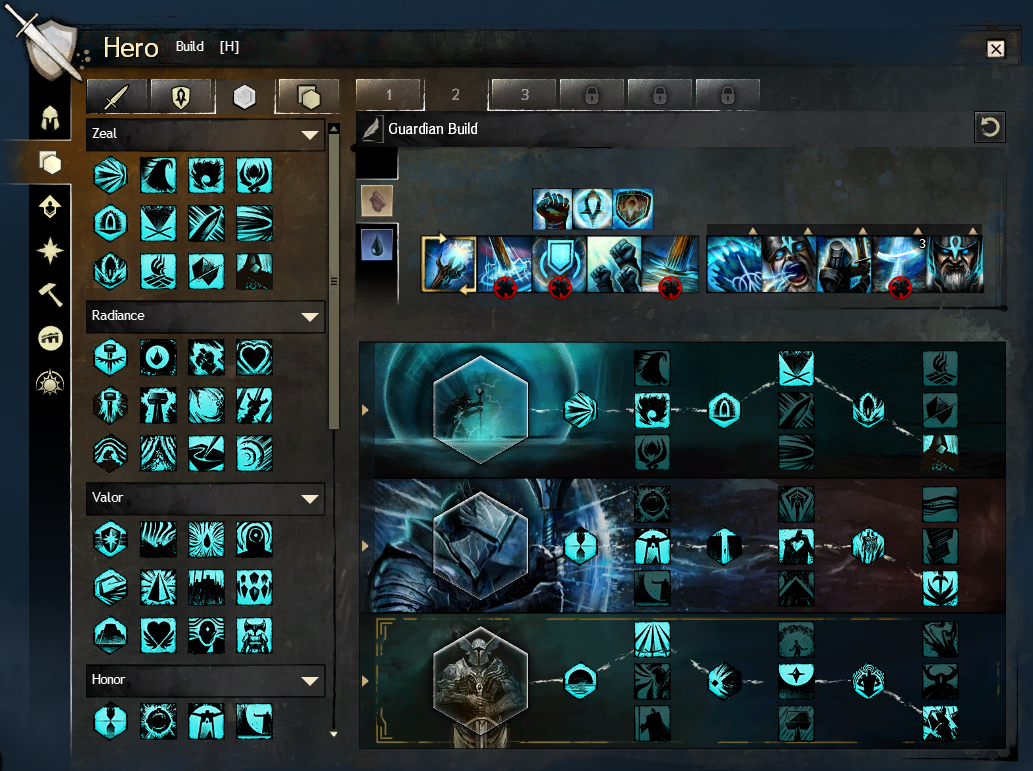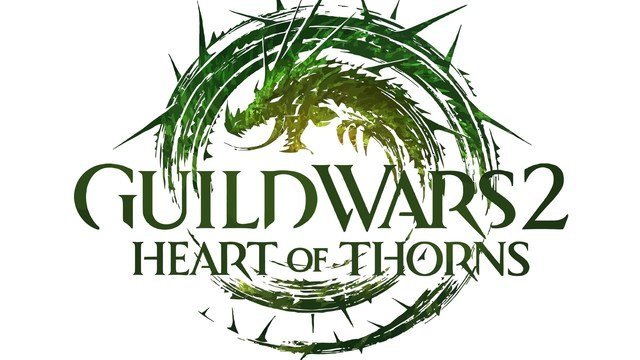Between the upcoming expansion and the game becoming free to play, it’s a great time to start playing Guild Wars 2. Noticing the lack of any guide on the game on GameSkinny, I decided to fill the void with some basic (albeit lengthy) tips on getting started with the game.
Character Creation
As with most MMOs, the choice of class (or profession in GW2 terms) will define your experience in Guild Wars 2. That being said, the game’s class philosophy is different from most other titles in the genre. For example, all classes can resurrect other players and all classes have access to some sort of healing skill. But before we become too bogged in the mechanics of the game, lets choose a class.
There are eight (soon to be nine) classes available to choose from. Each class comes with a unique mechanic that defines the profession. The first thing to consider when choosing a class is the type of armor you will wear. The choices you will have available are light, medium, and heavy. Light armor classes are the spellcasters of GW2. First you have the Elementalist, a mage that harnesses the power of the elements to deal damage and support allies. They’re unique mechanic is being able to attune to different elements (fire, air, water, and earth), changing the skills they have available to them. Next, the necromancer taps into the power of death to damage and weaken enemies. What makes necromancers unique is their ability to shroud themselves in death energy, empowering their attacks and protecting them for a limited time. Lastly, the mesmer uses illusion magic to confuse and disorient enemies and control the battlefield. A mesmer is able to produce clones and illusions with a number of their skills. Their profession mechanic is the ability to shatter these illusions to deal damage, apply debuffs to the enemy, or render the mesmer invulnerable for a limited time.
First of the medium armor professions is the ranger. The ranger is very comparable to the hunter from World of Warcraft. They excel at ranged attacks and their profession ability allows them to tame and control beasts you will find in your adventures. Next, the thief is a stealthy assassin, capable of rendering themselves and allies invisible in order to escape or prepare for the next attack. Their profession ability allows them to steal from enemies, granting them a one use ability based on the type of enemy the thief stole from. Lastly, the engineer controls a number mechanical inventions to support allies and damage enemies. Their unique profession ability is their tool belt, five abilities based on the other skills the engineer has equipped.
The first of the two heavy armor classes is the warrior. This weapon master is able to use their equipment to the fullest, either dealing impressive damage or greatly increasing their survivability. Their profession ability is a burst ability based on their current weapon that increases in power as the warrior takes damage or deals it. Finally, the other heavy armor class is the guardian. This holy warrior is akin to the paladin from World of Warcraft, able to buff their allies and cure them of afflictions. Their profession ability are three virtues, abilities that can increase the offensive and defensive abilities of the guardian passively and shares the buffs with allies when activated. There is one other heavy armor class coming in the upcoming Heart of Thorns expansion, the revenant. The final capabilities of the profession have yet to be dissected by players, but the revenant revolves around channeling the spirits of past heroes to change their own abilities. Expect further details on this profession once the expansion is released later this month.
Don’t worry if all this information is overwhelming. Just chose a profession that seems cool and get playing. Worrying about what the best class is or which you would like best is no replacement for actually experiencing each class for yourself. Luckily, you don’t have reach max level to get a feel for a class. A few hours of play should be enough to get an idea of what each class plays like.
Your First Hours of Play
Now that you’ve created a character, it’s time to actually play the game! You’ll begin with a short tutorial which will teach you teach you the basics of combat and moving around the world. After finishing, you’ll be dropped into the actual game world, full of other players and more dangerous enemies. You may notice while looking around that there are no NPCs with exclamation marks over their heads. You haven’t screwed something up in the options, Guild Wars 2 has no quests. You may ask “how am I supposed to level then?” There are two ways you’ll earn much of your experience points in the absence of quests, renown hearts and dynamic events. Renown hearts are the closest thing GW2 comes to quests. Denoted by an empty golden heart on the map, each heart will certain tasks you need to do in order to fill the heart. There is rarely a singular task but rather a few different options for you to choose from. For example, one of the hearts in starting zone of Queensdale will ask you to either kill bandits in a nearby cave, find lost moas hiding in shrubbery, and/or collect moa feed and return it to the NPC with the gold heart over their head.

Once you complete enough of these tasks you will complete the heart, gaining a bunch of XP, karma, and a bit of coin. Additionally, you can use the karma you just earned to buy items from the heart NPC. These items can range from produce for cooking, weapons and armor, or other unique items with special effects. You’re going to want to complete all the hearts you can find, both for the purposes of experience and world completion, one of the tasks you must complete in order to craft legendary weapons.
In addition to renown hearts, dynamic events will begin at certain times in specific places on the map. They are shown as orange markers on the map, often circling the area the event is taking place. Events are different from renown hearts in that you have a specific task to perform in order for the event to succeed. If you do succeed in completing the event you will earn rewards based on your participation, either gold, silver, or bronze.  On the other hand, you can fail events if you fail to complete the objective, halving your possible rewards had you succeeded. Take this event in Queensdale for example: bandits are trying to destroy the irrigation pipes for the farm, hold them off for 3 minutes to complete the event. Should you complete the event, everything will be great and business at the farm will continue as usual. Should you fail the event, a new event will be set to begin where you have to guard friendly NPCs as the repair the pipes and fend off any attacking bandits. This is an important feature of events: they often come in a series. So stick around for a bit after an event to see if one will start.
On the other hand, you can fail events if you fail to complete the objective, halving your possible rewards had you succeeded. Take this event in Queensdale for example: bandits are trying to destroy the irrigation pipes for the farm, hold them off for 3 minutes to complete the event. Should you complete the event, everything will be great and business at the farm will continue as usual. Should you fail the event, a new event will be set to begin where you have to guard friendly NPCs as the repair the pipes and fend off any attacking bandits. This is an important feature of events: they often come in a series. So stick around for a bit after an event to see if one will start.
The last of the primary ways you earn experience is by finding Points of Interest (POIs) and vistas. POIs show up as small squares on your map. They often correspond to the different areas or landmarks within a zone, and you will earn a little XP should you find one. Vistas are shown on the map as red mountains, filled if you have viewed the vista and unfilled if you haven’t. Should you find a vista, simply interact with it and a short clip will play showing off GW2’s landscape. Much like POIs, viewing a vista will earn you a little XP.
Leveling Up and Gear
As you go about completing hearts and events and finding POIs and vistas, you will inevitably level up. As part of leveling up you’re given a reward for for your progress. These will vary depending on what level you just reached but there are two important rewards I’d like to focus on. The first of these rewards are called Hero Points. These are used to unlock new skills for your character. You may have noticed to right of you health circle there are five squares. These are where you skills will go. 
Once all these slots are unlocked you are able to have one healing skill, three utility skills, and one elite skill equipped at any time. Healing skills are used to heal your character. As with almost all skills, the exact effects of healing skills will vary from profession to profession. Utility and elite skills are what differentiate one class from another. These are roughly equivalent to cooldown skills from other MMOs. To give an examples, warriors have utility skills called shouts that cause the warrior to shout the skill’s name and buff allies or debuff enemies, depending on the shout. An elite skill of the warrior’s is to turn into a giant juggernaut, empowering the warrior and giving them new skills. The best practice is to learn your profession’s skills and find out what skill is most useful for certain situations.
The other reward from leveling up I’d like to talk about are traits. Traits allow you to specialize your character. Each class currently has five trait lines, each with a focus. Further, each trait line has three minor traits and three major traits. Minor traits are static and cannot be changed. Major traits, on the other hand, can be changed and are the source of specialization for your character. Each of the three major trait slots in a skill line has three traits you can choose for that slot. It’s worth noting that you can only have a maximum of three trait equipped at one time. Before I confuse you further, here’s an example. Let’s say you have a level 80 warrior. You want to set up you traits, so you open your hero menu (“H” by default) and go to the build tab. Seeing that the three trait line slots are empty, chose the trait lines of Arms, Defense, and Discipline. Within each of these trait lines you then would choose what major traits you would like to use in each slot. This is the point where the rabbit hole of theorycrafting begins, so I’ll save further discussion of traits for another time. Suffice it to say, traits and the skills you choose are largely what define your character and build.
The other major part of what defines your character are your choice of weapons and armor. As you may have realized already, each class has a limited selection of weapon types to choose from. For example, elementalists cannot use axes, while necromancers and warriors can. Further, when you equip each type of weapon available to your class the skills on the left of your health orb will change. Each class has a unique set of skills for each of the weapons they can use, giving each a different focus. For example, the skills for scepter on a necromancer focus on debuffing the enemy, while daggers focus on direct damage. I would recommend while leveling that you try out the different types of weapons you can equip and get a feel for each.
Other Things to Do
So you’ve created a character and gained a few levels. You might at some point start to get bored and decide you want a change of pace. Luckily, Guild Wars 2 has other activities you can take part in if you become bored of leveling. First among these are dungeons. Much like other MMOs, dungeons are instanced areas that have a series of obstacles and bosses to challenge a group of players. There are a number of dungeons in the game, each unlocking at a different level. You can see when a new dungeon is unlocked on the level up notification.
If you’re looking to challenge other players in PVP, you have two options. The first of these is called SPVP, or structured PVP. This game type is similar to battlegrounds from WoW, with players being divided into two teams with objectives for them to compete for. By controlling objectives, a team will gain points and the team first to 500 points will win the match. There a number of possible maps that you may fight on, each with their own features and layout. To join a match you simply go to the SPVP lobby by opening the corresponding menu (it looks like two crossed swords) and clicking “Enter PVP Lobby”
The other type of PVP available is World vs World or WvW. In this game mode, three different servers are matched together and compete for control a objectives consisting of different structures, such as castles and towers. Players use siege (catapults, battering rams, trebuchets) and large, organized groups to take control of enemy castles. At regular intervals, each server is awarded points based on the different structures they control. At the end of the week the points are tallied and the servers are ranked based on their score. This score is then used to adjust the server’s score among all servers, thus changing the possible opponents they might face.
 You will enjoy this type of PVP the most if you can find a group to run with, either via a guild or just asking in chat. It’s also useful to look for commander tags (shown to the right), as these are often belong to players leading groups. To enter WvW, open the World vs World menu (default key is “B”) and choose one of the four maps to join.
You will enjoy this type of PVP the most if you can find a group to run with, either via a guild or just asking in chat. It’s also useful to look for commander tags (shown to the right), as these are often belong to players leading groups. To enter WvW, open the World vs World menu (default key is “B”) and choose one of the four maps to join.
Don’t worry if all of these game features are overwhelming now. It will take time for you to become familiar with all the different things to do in Guild Wars 2. Just jump into one that seems interesting and learn as you go. It also helps if you find more experienced players to help you out, often by joining a guild and asking questions.







Published: Oct 8, 2015 08:35 am